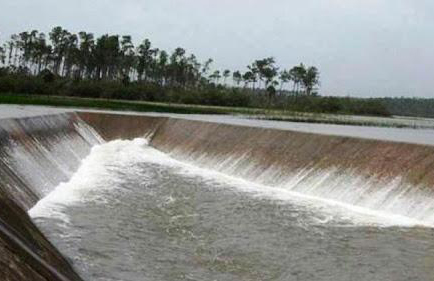
Havana, October 23. - An increase in precipitation in September and October allowed for partial recovery of Cuba's reservoirs, although difficulties in potable water supply persist in several eastern provinces, reported engineer Yulian Omar Rodríguez, vice president of the Land Water Management Business Group.
The national rainfall accumulation from May to September reached 609 millimeters, equivalent to 72% of the historical average, with uneven behavior: west at 70%, center at 71%, and east at 76%, according to the Mesa Redonda program and reported by Cubadebate.
October proved particularly favorable, with 140 millimeters up to the 20th, a figure representing 91% of the monthly average, although the east reported the lowest values, with provinces like Guantánamo (46%), Santiago de Cuba (51%), and Holguín (59%).
The national reservoir filling capacity reached 53%, with a net gain of 941 million cubic meters. The central region contributed more than half of that increase, while in the east, Granma, Santiago de Cuba, and Guantánamo stood out.
Despite the improvement, water supply remains critical in Holguín, Santiago de Cuba, and Guantánamo, where supply reservoirs do not exceed 40% of their capacity; in Holguín, the Cacoyugüín dam required installing a new pumping system to access dead volume.
In Santiago de Cuba, the startup of a pumping station in Gota Blanca is planned, which will add 600 liters per second to the supply system, while progress is made on the Mogote transfer and the construction of a new pipeline to reduce losses.
Engineer Yunior González Núñez, first vice president of the Water and Sanitation OSDE, explained that the rains allowed reducing from 3.5 million to 1.7 million the Cubans affected by service interruptions, representing recovery for 1.5 million people in one month.
González Núñez noted that service stability depends on production, conduction, and distribution, and warned that electrical interruptions and deterioration of pipelines, such as those in the Southern Basin, cause breaks and suspensions of up to 24 hours.
To stabilize transfers, the country's leadership allocated around one million dollars for the purchase of 18 pumping units, some of which have already arrived and will benefit eastern and central territories, while others will arrive before year's end.
Rodríguez highlighted that the country has three factories and 15 production lines to provide definitive solutions for supply, as is happening at La Yaya dam, and emphasized that current efforts seek to consolidate a more resilient system amid climate challenges. (Source: ACN) (Photo: Granma)